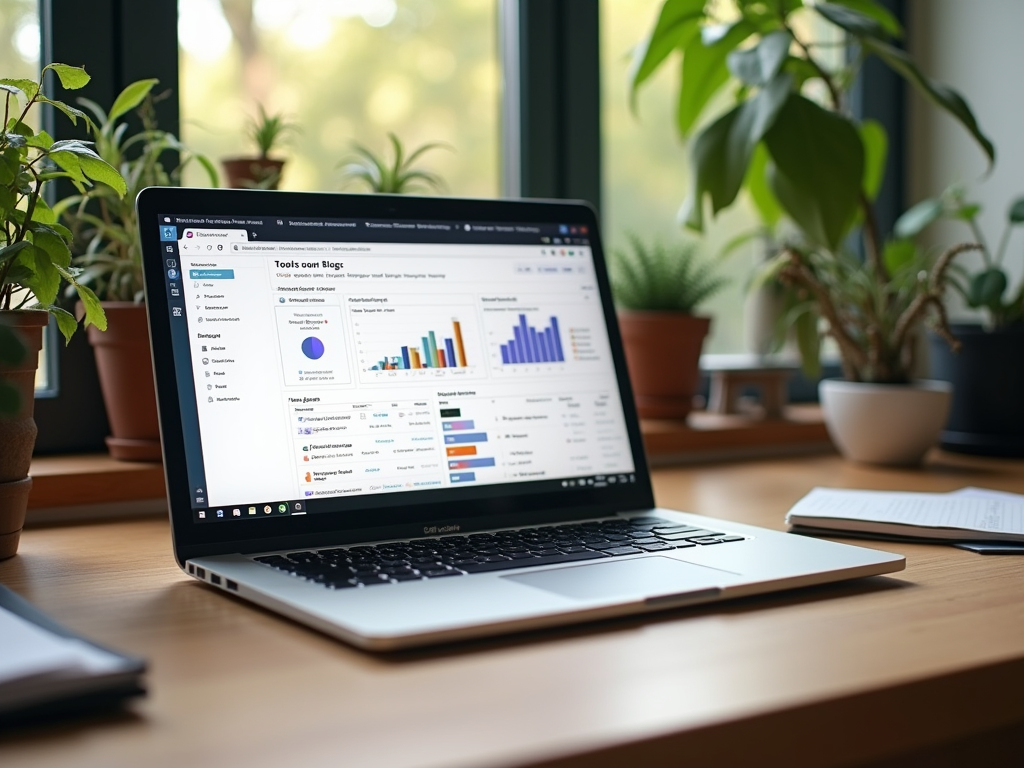In a world awash with information, carving out a niche for your blog can feel like an insurmountable challenge. Yet, the artistry of successful blogging transcends mere creativity; it hinges on a mastery of SEO. Search Engine Optimization is the invisible hand that guides potential readers from the vast expanse of the internet to your digital doorstep. By employing smart strategies and well-researched techniques, you can enhance your blog’s visibility significantly. It’s not just about writing great content; it’s also about ensuring that your audience can easily find it. Implementing SEO effectively paves the way for a consistent influx of organic traffic.
To truly harness the power of SEO, one must first understand its importance in the context of blogging. The landscape of online content is fiercely competitive, with millions of blogs vying for attention. This is where well-executed SEO can set you apart. By optimizing your blog for search engines, you enhance not only your visibility but also your credibility. Engaging your audience with tailored content becomes much easier when paired with optimized strategies. By focusing on SEO, you significantly increase your chances of drawing in readers who are genuinely interested in what you have to say.
Understanding the Importance of SEO for Blogs

As you delve deeper into blogging, grasping the significance of SEO becomes paramount. Search engines function as gatekeepers, and they reward content that fulfills user queries effectively. Without optimization, your carefully crafted posts might languish in obscurity, unseen by potential readers. In essence, SEO is about aligning your content with user intent. Understanding what your audience is searching for is fundamentally the first step to creating relatable and relevant content. Failing to capitalize on this can result in lost opportunities for engagement and readership growth.
Keyword Research: The Foundation of SEO

At the heart of every successful SEO strategy is comprehensive keyword research. Identifying relevant keywords enables you to tailor your content toward what users are actively seeking. This process uncovers the phrases and terms that resonate with your potential audience, guiding your writing direction. It’s vital to think like your target audience, considering what they would type into a search engine when looking for information related to your blog. Discovering valuable keywords provides a framework for engaging content that meets expectations.
- Google Keyword Planner
- Ahrefs
- SEMrush
- Ubersuggest
- AnswerThePublic
Crafting Quality Content
Writing with clarity, engages your audience while also enhancing your SEO. Creating informative content that resonates with readers establishes trust and authority. Consistent quality in your writing ensures that audiences return, making them more likely to share your content with others. Emphasizing valuable and relevant topics keeps your readers engaged and hungry for more. The more interaction your blog receives, the more search engines recognize its worth. Ultimately, engaging writing combined with effective SEO strategies can help your blog thrive in a crowded digital ecosystem.
It’s essential to remember that your audience is at the heart of all your content. When drafting blog posts, consider their questions, interests, and challenges. Adopting a conversational tone helps foster connection and relatability, which keeps readers eager for your insights. Audiences appreciate clarity, so aim to communicate complex ideas succinctly, using everyday language. Also, remember to incorporate a variety of formats within your content; lists, images, and even tables can invigorate a post, making it more engaging. Ultimately, your unique perspective is what will keep readers coming back.
On-Page SEO Techniques
On-page SEO refers to the strategies that you can implement directly on your web pages to improve their search rankings. This is about optimizing each post to ensure higher visibility on search engines. It involves various techniques that enhance not only search engine understanding but user experience as well. From title tags to creating a clear structure with headers, every detail counts. By taking these measures, your blog can become not only more engaging but also more discoverable.
Title Tags and Meta Descriptions
- Include primary keywords in your title tags.
- Craft unique and compelling meta descriptions for each post.
- Avoid clickbait; ensure your title accurately reflects the content.
Header Tags and Content Structure
| Header Level | Description |
|---|---|
| H1 | Main title of the article, includes primary keywords. |
| H2 | Subsections that break down content for clarity and relevance. |
| H3 | Subsections under H2, further structuring the information. |
Utilizing internal and external linking is also crucial. Internal links help readers navigate your blog while providing additional context to your posts. External links, particularly to reputable sources, enhance your blog’s credibility. These linking strategies create a web of information that bolsters your posts’ authority and improves the overall user experience, all of which paints a favorable picture for search engines.
Optimizing Images for SEO
Don’t overlook the important role of images in your blog content. Optimizing images can significantly impact load times and enhance user experience. Search engines also analyze images, so it’s vital to provide them with context. By using descriptive alt text, you not only improve accessibility but boost your chances of appearing in image searches. Remember to select high-quality images that align with your content, reinforcing your message visually.
- Write clear, descriptive alt text for all images.
- Name your image files descriptively before uploading.
- Compress images for faster site loading times.
Mobile Optimization and Site Speed
In this mobile-dominated era, optimizing your blog for mobile users is not just an option; it’s a necessity. Google’s algorithms favor mobile-friendly sites, meaning a well-optimized mobile experience can significantly boost your rankings. Additionally, site speed is critical; slow-loading pages can lead to higher bounce rates, diminishing your audience engagement. You can implement responsive web design to ensure your blog is easily navigable across devices. Overall, a seamless experience encourages users to linger longer and interact more, both of which contribute positively to your SEO efforts.
Итог
Implementing effective SEO strategies in your blog can drastically improve your organic traffic. By concentrating on keyword research, crafting quality content, mastering on-page optimization, optimizing images, and ensuring mobile responsiveness, you create a blog that not only ranks well but fosters engagement and loyalty among readers. Continuous learning and adaptation are vital, as the digital landscape evolves rapidly, so stay updated with the latest SEO trends to keep your blog thriving.
Часто задаваемые вопросы
- What is SEO? SEO stands for Search Engine Optimization, a set of strategies to improve the visibility of your website in search engine results.
- How long does it take to see results from SEO efforts? Typically, it can take several weeks to months to see noticeable results from your SEO strategies.
- Do I need to update my blog regularly for better SEO? Yes, regularly updating your blog with fresh content can improve your SEO rankings and keep your audience engaged.
- Can I do SEO on my own? Absolutely! Many bloggers successfully manage their own SEO efforts with the right tools and guidance.
- What are some common SEO mistakes to avoid? Common mistakes include keyword stuffing, neglecting mobile optimization, and failing to use alt text for images.
